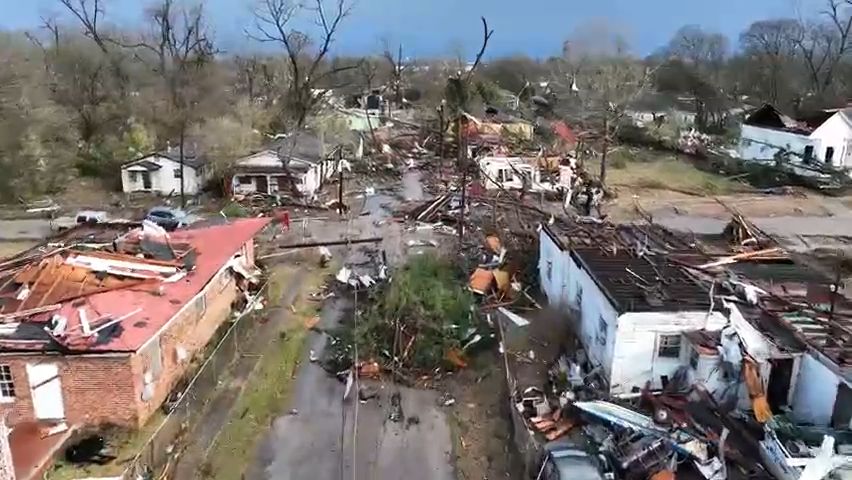Weather radar: Private effort could close west Alabama coverage gap
A private company is placing a weather radar station near Meridian, Miss., which it says will help address the so-called “radar gap” in western Alabama and eastern Mississippi.
That could lead to residents getting quicker and more detailed information during bouts of severe weather.
Climavison, a Lousiville, Ky., based company, is placing the weather radar in Lauderdale County in the town of Marion. The location is about halfway between the Mississippi capital of Jackson and Alabama capital of Montgomery. Climavision is working on a nationwide network of weather radar coverage.
The company provides custom forecasts for government, industry and individuals.
“This part of the Deep South is especially prone to tornadoes, so this gap has long been a concern,” said Chris Goode, co-founder and CEO of Climavision. “Our Marion radar is a major step forward for weather surveillance in this area, and we’ll keep working to provide even better data for these communities.”
The site is set to go online in early 2024.

The National Weather Service maintains a nationwide network of weather radar stations and is responsible for issuing weather watches, warnings, alerts and advisories. Forecasters use radar sites in Jackson, Birmingham, Mobile and Montgomery to cover the western Alabama gap area.
The NWS and Climavision have an agreement under which data from 12 existing Climavision radar sites is shared with the NWS, said Erica Grwom Cei, a spokeswoman and meteorologist with the National Oceanic and Atmospheric Association, the parent agency of the weather service.
“The Climavision data provided to the National Weather Service is experimental and under analysis by NOAA for potential operational viability,” she said.
NOAA is also working to bring on the next generation of weather radar.
“The Radar Next program will also explore supplemental data and integration as part of a future, hybrid radar solution,” she said. “The intent is to use the best possible solution to meet NWS radar coverage requirements.”
Why is there a weather radar gap?
The cause of the gap is simply the distance between radar sites.
After about 80 miles, the radar can’t “see” into the storms at lower altitudes. The western Alabama gap, covering an area west of Selma, south of Tuscaloosa and through Meridian, then into eastern Mississippi, has radar coverage above 6,000 feet.
Areas closer to radar sites have reliable coverage down to 4,000 feet, depending on location.
Being closer to radar sites allows NWS meteorologists to better determine if a tornado is on the ground, and issue advisories warning the public that danger is imminent. The NWS has been working to address gaps in coverage nationwide.
And weather radar sites aren’t cheap. A 2008 report by the National Research Council estimated that it would take $10 million to put in a new weather radar site. The tab includes the radar unit and land acquisition. Keeping the sites up and running is also expensive. It takes about $500,000 a year to maintain each site, the 2008 study shows.
The NWS radar network across the country is called NEXRAD, for Next Generation Radar. There are 160 sites covering the 50 states, with seven sites in Alaska and four in Hawaii. Most of the sites are are operated by the NWS, but the Department of Defense also maintains and operates weather radar sites on military installations.
The Marion installation is the second Climavision radar constructed in the state, and it joins several other systems already in operation across the country and the Southeast. Nationally, Climavision plans to have 25 radars online by year end, eventually scaling the network to more than 200 radar systems. The Climavision network uses a different type of radar from NWS sites.
Contact Montgomery Advertiser reporter Marty Roney at mroney@gannett.com.
This article originally appeared on Montgomery Advertiser: Weather radar: Private effort could warn more people in west Alabama

